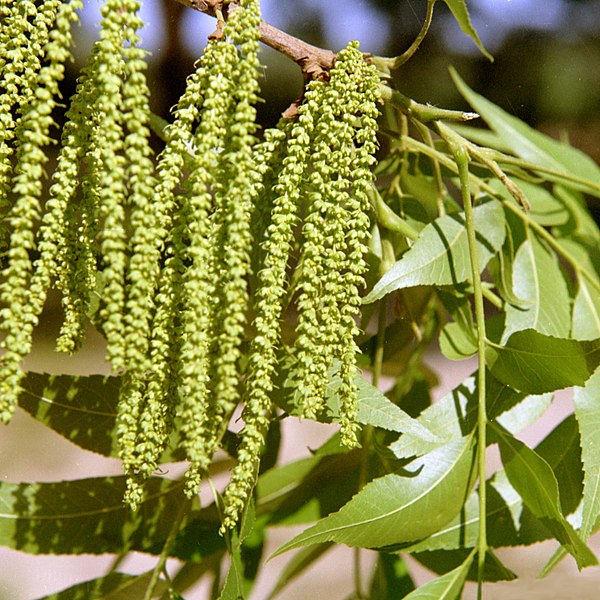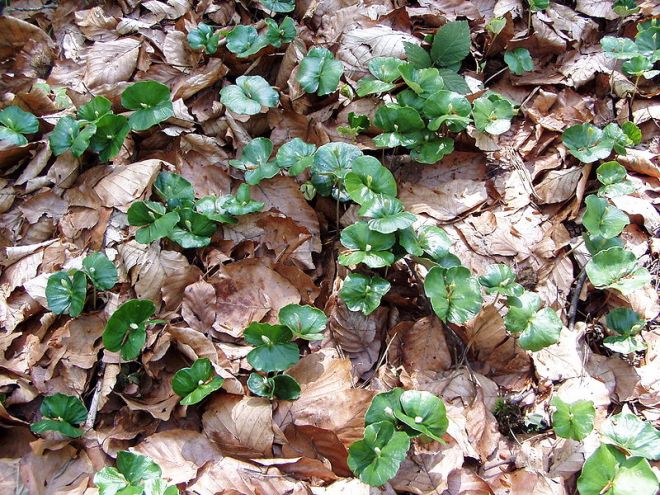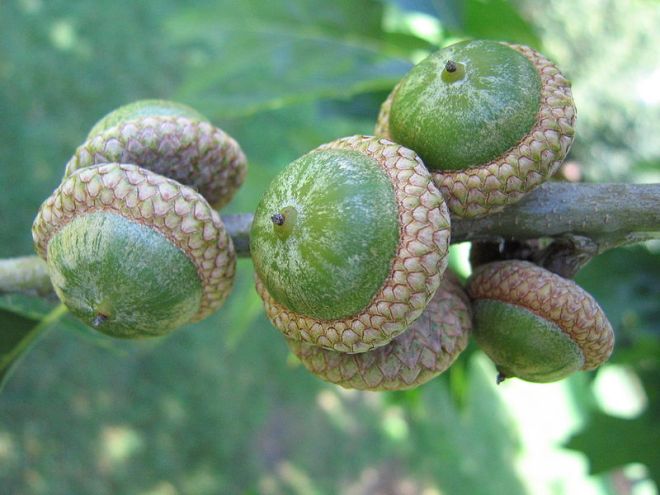Perennial plants that are able to reproduce multiple times during their lifetime don’t always yield the same amount of seeds each time they reproduce. For some of these plants, there is a stark difference between high-yield years and low-yield years, with low-yield years outnumbering the occasional high-yield years. In years when yields are high, fruit production can seem excessive. This phenomenon is called masting, or mast seeding, and it takes place at the population level. That is, during a mast year, virtually all individuals in a population of a certain species synchronously produce a bumper crop of seeds.
Plants of many types can be masting species. Bitterroot milkvetch (Astragalus scaphoides) and a tussock grass known as Chionochloa pallens are masting species, for example. However, this behavior is most commonly observed in trees, notably nut producing trees like oaks, beeches, and pecans. As you might imagine, the boom and bust cycles of mast seeding plant populations can have dramatic ecological effects. Animals that eat acorns, for example, are greeted with a veritable buffet in a mast year, which can increase their rate of reproduction for a spell. Then, in years when acorns are scarce, the populations of those animals can plummet.
How and why masting happens is not well understood. It is particularly baffling because masting populations can cover considerably large geographic areas. How do trees covering several square miles all “know” that this is the year to really go for it? While a number of possible explanations have been explored, there is still much to learn, especially since so many different species growing in such varied environments exhibit this behavior.
A popular explanation for mast seeding is predator satiation. The fruits and seeds of plants are important food sources for many animals. When a population of plants produces fruit in an unusually high abundance, its predators won’t possibly be able to eat them all. At least a few seeds will be left behind and can sprout and grow into new plants. By satiating their predators they help ensure the survival of future generations. However, even if a plant species has evolved to behave this way, it still doesn’t explain how all the plants in a particular population seem to know when it’s time for another mast year.
Predator satiation is an example of an economy of scale, which essentially means that individual plants benefit when the population acts as a whole. Another economy of scale that helps explain masting is pollen coupling. This has to do with the timing of flowering in cross pollinating species. If individuals flower out of sync with one another, the opportunities for cross pollination are limited. However, if individuals in a population flower simultaneously, more flowers will be pollinated which leads to increased fruit and seed production. For this to happen, there are at least two factors that come into play. First, the plants have to have enough resources to flower. Making flowers is expensive, and if the resources to do so (like carbon, nitrogen, and water) aren’t available, it won’t happen. Second, weather conditions have to work in their favor. Timing of flowering depends, not only on daylength, but on temperature, rainfall, and other local weather conditions. If individuals across a population aren’t experiencing similar weather, the timing of their flowering may be off.

pollen-producing (male) flowers of pecan (Carya illinoinensis) — via wikimedia commons; Clemson University
Resource matching and resource budgeting are other proposed explanations for masting. Since plants can only use the resources available to them for things like growth and reproduction, they vary each year in how much growing or reproducing they do. Theoretically, if plants in a population are all going to flower in the same year, they all have to have access to a similar amount of resources. Often, the year following a mast year, there is a significant drop in fruit production, as though the plants have used up all of their available resources for reproduction and are taking a break. Some hypothesize that masting is a result of resource storage, and that plants save up resources for several years until they have what they need for yet another big year.
Another thing to consider is how plant hormones might play a role in masting. Gene expression and environmental cues both result in hormonal responses in plants. As Bogdziewicz, et al. write in Ecology Letters (2020), “if hormones and the genes that control them are hypersensitive to an environmental signal, masting can be at least partially independent of resource- and pollen-based mechanisms.” This and other potential explanations for masting are, at this point, largely theoretical. In their paper, Bogdziewicz, et al. propose a number of ways that theoretical predictions can be experimentally tested. If the “research agenda” outlined in their paper is carried out, they believe it will “take the biology of masting from a largely observational field of ecology to one rooted in mechanistic understanding.”
In her book, Braiding Sweetgrass, Robin Wall Kimmerer proposes an additional explanation for the mechanisms behind masting – the trees are talking to one another. Not in the way that you and I might converse, but rather by sending signals through the air via pheromones and underground via complex fungal networks. There is already evidence for this behavior when it comes to plants defending themselves from predators and in sharing resources, so why not in planning when to reproduce? As Kimmerer writes regarding masting, “the trees act not as individuals, but somehow as a collective.” The question now is how.

seedlings of European beech (Fagus sylvatica), a mast-seeding species — via wikimedia commons; user: Beentree
Additional Resources:
- Morton Arboretum You Tube Channel – “The Ups and Downs of Acorn Crops: A Comparison of Mast Seeding Among Oaks”
- Pearse, I.S, et al. (2016). Mechanisms of mast seeding: resources, weather, cues, and selection. New Phytologist 212: 546-562.
- Appalachian Mountain Club – Mystery of the Mast Year

